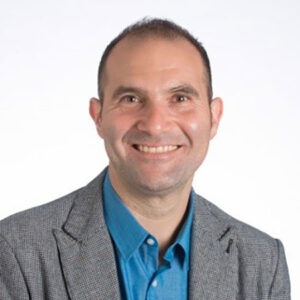Pierluigi Mancarella
Home / Pierluigi Mancarella
Presentations:
What, Where and Who? Virtual Power Plants, Energy Communities and Microgrids
Distributed Energy Resources (DER) are becoming widespread in most countries worldwide. In particular, at the household level rooftop solar photovoltaics and battery energy storage systems, and soon electric vehicles too, are poised to play an essential role towards power system decarbonisation and more consumer-centric markets. Local energy systems with shared assets such as community storage are also emerging as important options of interest. Key ongoing debates now refer to how different DER technologies and schemes should be fully integrated into power and energy system and market operation.
In this IEEE Power and Energy Society Distinguished Lecture we will present fundamental techno-economic aspects of key aggregation approaches that could enable large-scale deployment of DER, namely, virtual power plants, energy communities, and microgrids. More specifically, we will discuss the key features of these different aggregation models (“what”), under which conditions each of them should/could be considered (“where”), and potential technical and commercial opportunities and challenges for different stakeholders involved with DER development, e.g., aggregators, energy managers, distribution system operators, and so forth (“who”). Several case studies from a number of recent projects in Australia, UK, Europe, and around the world will be used to exemplify the concepts presented.
Reliability and Resilience in Low-carbon Power Systems and Markets
Our understanding of the classical reliability concepts of security and adequacy is increasingly being challenged by: (a) growing shares of inverter-based resources and variable renewable energy technologies that call for new operation and planning approaches, particularly to deal with decreasing levels of inertia and system strength, larger reserve requirements, and increasing volumes of distributed energy resources that are not “visible” to the system operator; (b) the more frequent occurrence of extreme, high-impact low-probability events (e.g., driven by climate change), with potentially catastrophic impacts; and (c) a number of unexpected developments in the context of electricity and more generally energy markets around the globe.
In this IEEE PES Distinguished Lecture we will discuss how there is a need for introducing new analysis and modelling frameworks to deal with the increasing fragility of low-carbon grids and markets and exposure to extreme physical and economic events. The key desirable features of such frameworks will be presented for both operation and planning and from both technical and economic/commercial perspectives, along with metrics, methodologies and modelling tools that can help make future systems and markets more secure, reliable and resilient.
The key question that will be asked is whether the grid should be made “stronger” (e.g., through component hardening), “bigger” (more redundant, through investment in new transmission/generation asset) or “smarter” (through new technologies and operational practices), and what measures should be put in place to increase the resilience of low-carbon electricity and energy markets.
Besides different examples taken from the speaker’s several international projects in the area, the South Australia “Black System” event of September 2016, the UK demand disconnection event of August 2019, the Texas power crisis of February 2021, and the recent energy crisis in Europe and worldwide will be taken as “textbook” case studies to practically illustrate some of the general concepts presented.
Integrated Electricity-Gas-Hydrogen Systems: Techno-economic Modelling, Challenges, and Opportunities
As the world is accelerating the efforts to meet the net-zero carbon emission targets by 2050, integrated energy systems and sectors coupling are now more and more in the spotlight. In particular, hydrogen and especially “green” hydrogen could play a major role in decarbonising the whole energy system thanks to its versatility to operate across multiple energy sectors and in providing flexibility, security, reliability and resilience services to a renewables-dominated power system.
In this talk we will explore the main challenges and opportunities associated with techno-economic modelling of integrated electricity-gas-hydrogen systems from different perspectives, including: integrated infrastructure modelling with hydrogen injection, gas composition, quality tracking and constraints; operational flexibility of hybrid electricity-hydrogen virtual power plants; investment planning examples on electrolysers and integrated electricity-hydrogen infrastructure; provision of ancillary services from hydrogen plants; and new business models and use cases for electricity-hydrogen hybrid plants. Several case study examples will also be presented from different ongoing projects around the world.
© Copyright 2023 IEEE — All rights reserved. A not-for-profit organization, IEEE is the world’s largest technical professional organization dedicated to advancing technology for the benefit of humanity.


